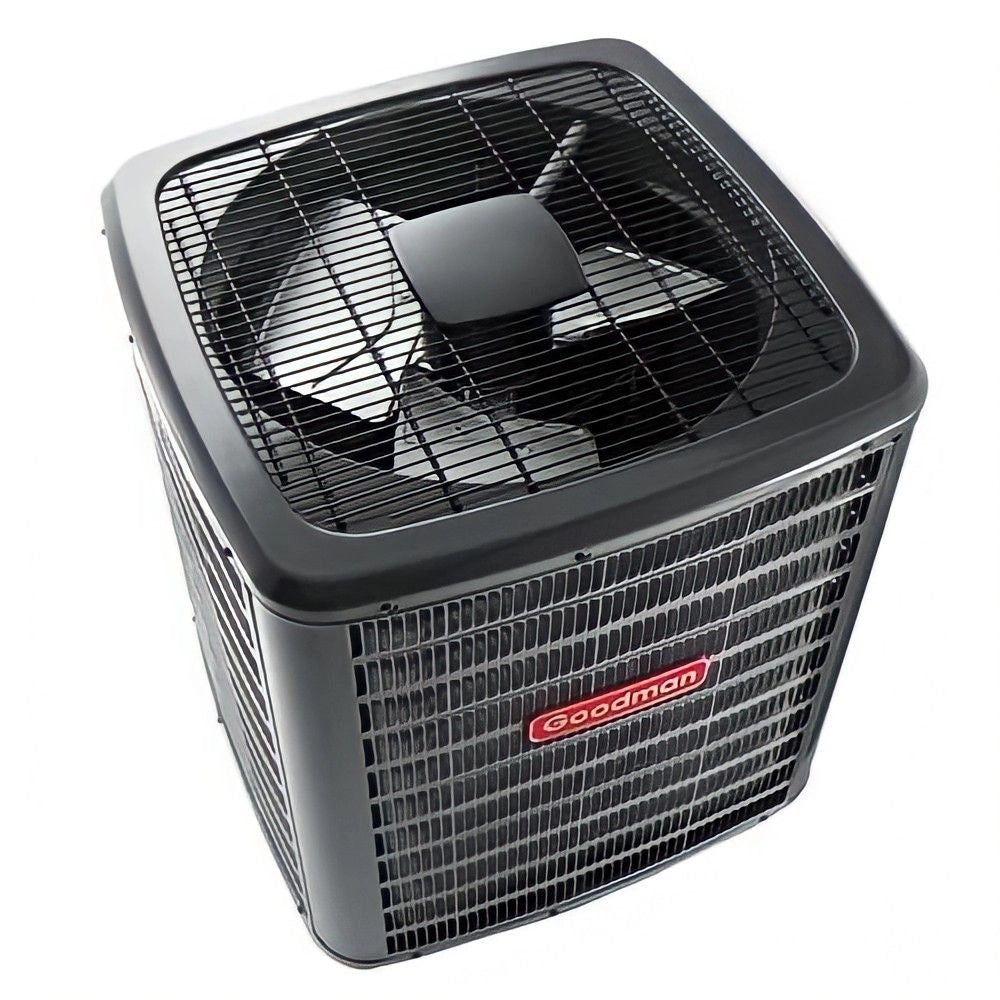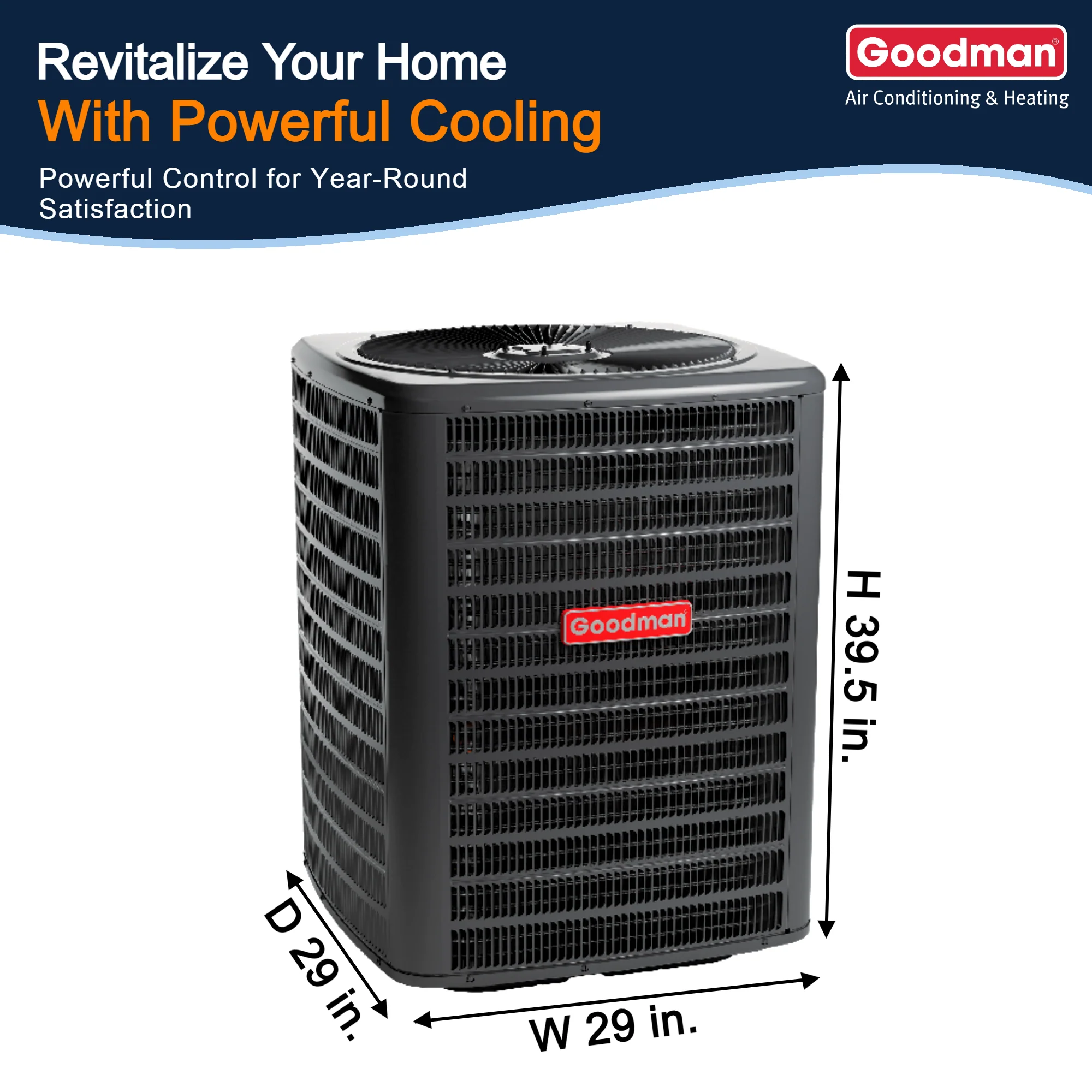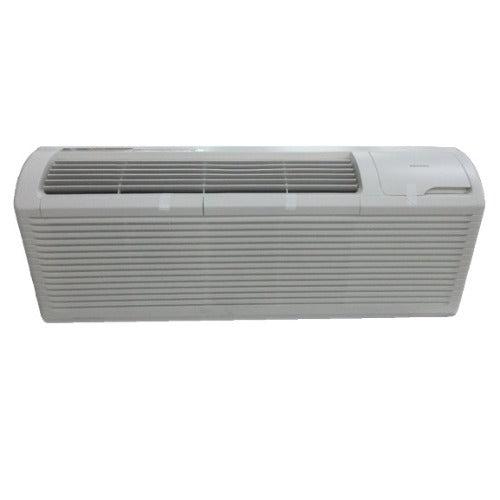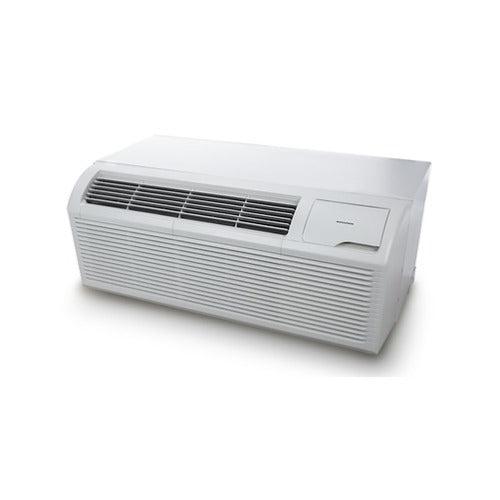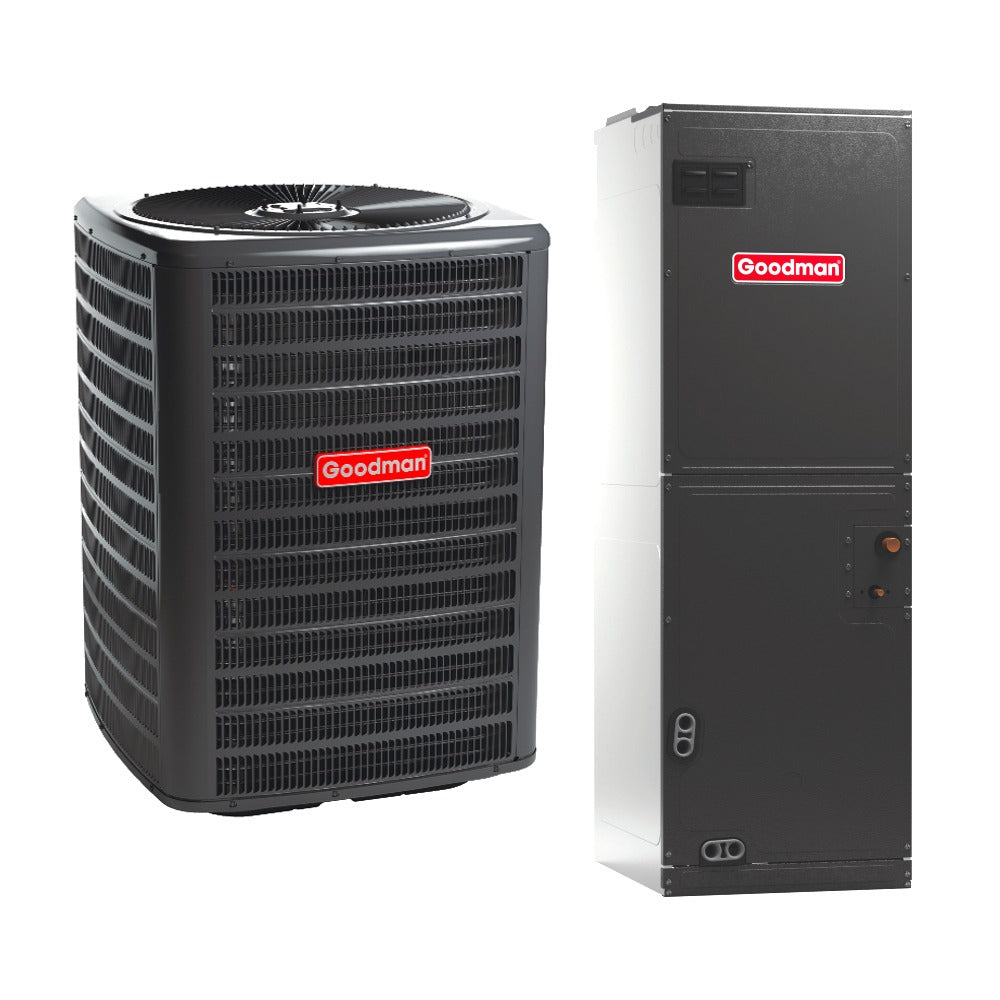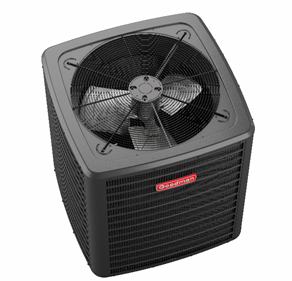The Pros of Through-the-Wall AC Units: Why They’re the Ideal Choice for Homeowners
When considering home cooling solutions, through-the-wall air conditioners have become a standout option. These units are especially popular due to their efficiency, reliability, and minimal space impact. While traditional window units have been the go-to for cooling homes, through-the-wall ACs offer distinct advantages that make them a superior choice, particularly in terms of BTU, SEER ratings, R-32 refrigerant, energy efficiency, enhanced energy, and available rebates. This guide explores why through-the-wall AC units are not just effective, but also provide long-term value for both homeowners and property managers.
What is a Through-the-Wall Air Conditioner?
A through-the-wall air conditioner is a permanent air conditioning unit that is installed into a hole in an external wall. Unlike window air conditioners, which sit within a window frame, through-the-wall units are inserted through the wall, providing a cleaner, more streamlined look. These systems are designed for homeowners who want permanent installation without the need for removing or reinstalling the unit seasonally.
Through-the-wall air conditioners are generally more powerful, providing greater BTU capacity, meaning they can effectively cool larger rooms, open spaces, or multi-room areas. These units are built to be low-maintenance and efficient, allowing homeowners to enjoy reliable comfort with less upkeep.
The Advantages of Through-the-Wall Air Conditioners
1. Enhanced Energy Efficiency
One of the biggest advantages of through-the-wall AC units is their exceptional energy efficiency. These units are designed to cool spaces without wasting excessive energy, offering a perfect balance between power and efficiency. A key factor that enhances their energy efficiency is their SEER rating.
How SEER Affects Energy Consumption:
SEER (Seasonal Energy Efficiency Ratio) is a critical measure of an air conditioner’s energy performance. It compares the cooling output (in BTUs) over a cooling season to the energy consumption (in watt-hours). The higher the SEER, the more efficiently the unit works.
Many modern through-the-wall AC units offer SEER ratings between 16 and 20, significantly higher than older models, which often have SEER ratings below 13. By choosing a unit with a higher SEER, homeowners can save money on their energy bills by reducing the amount of electricity required to cool their spaces.
Example: A unit with a SEER rating of 18 will consume 15-20% less energy compared to a system with a SEER rating of 12.
Additionally, through-the-wall ACs are engineered for more efficient airflow and reduced wear on components, which translates to longer service life and lower overall maintenance costs.
2. Higher Cooling Capacity (BTU) for Larger Spaces
When considering air conditioners, the BTU rating is the primary metric for determining cooling capacity. BTU (British Thermal Unit) refers to the amount of heat an air conditioner can remove from a room per hour. The higher the BTU, the greater the cooling power of the unit. This is especially important for larger rooms or spaces that need more substantial cooling.
Unlike window units, which are often limited in terms of their BTU capacity, through-the-wall AC units typically offer more flexibility in terms of cooling power. With a broader range of BTU ratings, homeowners can easily select a system that is tailored to the size of their space.
Selecting the Right BTU for Your Space:
-
5,000 to 6,000 BTU: Ideal for rooms up to 150 square feet.
-
7,000 to 8,000 BTU: Suitable for rooms from 200 to 300 square feet.
-
12,000 BTU: Best for 500 square feet or larger.
-
15,000 to 18,000 BTU: Can handle up to 700 square feet, making it ideal for larger rooms or open-plan areas.
The increased BTU options available with through-the-wall AC units ensure that you can maintain a comfortable climate in both small and large rooms, optimizing your system for maximum energy efficiency.
3. Use of R-32 Refrigerant for Eco-Friendly Cooling
The use of R-32 refrigerant in modern air conditioning systems represents a significant leap forward in both energy efficiency and environmental sustainability. R-32 is a hydrofluoroolefin (HFO) refrigerant, a single-component refrigerant that is more efficient and has a much lower environmental impact than older refrigerants like R-410A.
Why R-32 is the Future of Cooling:
-
Low Global Warming Potential (GWP): R-32 has a GWP of only 675, compared to R-410A, which has a GWP over 2,000. This makes R-32 a much more environmentally friendly refrigerant.
-
Higher Efficiency: R-32 enhances heat transfer within the system, leading to a higher SEER rating and enhanced energy efficiency. This means the unit works harder with less energy consumption.
-
Smaller Charge Size: R-32 requires less refrigerant to achieve the same cooling power, reducing the overall environmental impact while still delivering optimal cooling performance.
By opting for a through-the-wall AC unit with R-32 refrigerant, homeowners can enjoy both eco-friendly cooling and long-term cost savings due to improved energy efficiency.
4. Aesthetic Appeal and Space-Saving Design
One of the most compelling reasons homeowners choose through-the-wall AC units over window models is their aesthetic appeal. These units are installed within the wall, leaving the room’s windows unobstructed and providing a more seamless appearance.
Space-Saving and Aesthetically Pleasing:
-
Invisible from the Inside: Since the unit is built into the wall, only the front grill is visible inside the room, offering a much more sleek and minimalistic design.
-
No Window Obstruction: With through-the-wall air conditioners, you retain access to natural light and unobstructed views, unlike window units that block the entire window.
-
Ideal for Multi-Room Cooling: Through-the-wall units are also perfect for larger spaces, including open-concept rooms, where a window unit would be too bulky or ineffective.
This space-saving design and aesthetic appeal make through-the-wall ACs ideal for homeowners who want both cooling performance and a more polished look for their interiors.
5. Quiet Operation for Better Comfort
Unlike window units, which have noisy components inside the living space, through-the-wall AC units operate much more quietly. The compressor and fan are located on the exterior of the building, resulting in minimal noise disruption inside.
Quiet Cooling Performance:
-
Noise Reduction: Because the noisy components are outside, these units are generally much quieter, providing a peaceful living environment. This is especially beneficial in areas where silence is important, such as bedrooms or home offices.
-
Comfortable Sleeping: Noiseless operation makes through-the-wall units ideal for use in bedrooms, where loud air conditioners can disrupt sleep.
-
Reduced Distraction in Workspaces: In a home office, quiet operation of a through-the-wall AC ensures a calm, productive environment without the constant hum or rattling noise associated with window units.
This ability to provide efficient cooling without disturbing the home’s ambiance is one of the main reasons homeowners prefer through-the-wall AC units.
6. Easier Installation and Maintenance
Once installed, through-the-wall AC units require minimal maintenance. Since they are permanently installed in the wall, there’s no need for seasonal installation and removal like window units, which can be cumbersome to store.
Simplicity and Longevity:
-
Simple Installation: Although installation may require cutting a hole in the wall, professional HVAC installers can quickly and efficiently complete the process. Once in place, the unit is not as likely to be affected by external weather conditions as window units.
-
Longer Lifespan: These units are built to last, with robust, long-lasting components. Because through-the-wall ACs are more securely installed, they are less susceptible to damage from outdoor weather compared to window units.
-
Minimal Maintenance: With easy access to filters and components, maintenance is straightforward. Keeping filters clean and checking the condenser coil ensures optimal performance for years to come.
7. Energy Efficiency Rebates for Through-the-Wall ACs
Many homeowners are not aware that there are various rebates and tax incentives available when purchasing high-efficiency through-the-wall AC units. These incentives help offset the initial cost of installing a new, energy-efficient air conditioner and can make the upgrade even more cost-effective.
Rebates and Tax Credits:
-
Federal Tax Credits: Homeowners can often claim tax credits of up to 30% of the total cost of a high-efficiency AC unit, including installation costs, when opting for a SEER-rated unit with R-32 refrigerant.
-
State and Utility Rebates: Many states offer rebates for energy-efficient purchases. Utility companies also provide incentives, often in the form of cash-back or discounts, based on the SEER rating and refrigerant used in the unit.
-
Upgrading to a More Efficient Model: Even if you're upgrading from an older unit, you may still be eligible for rebates. This provides a perfect opportunity to improve both your cooling and your home’s overall energy efficiency.
By taking advantage of these available incentives, homeowners can make the switch to a more efficient cooling solution without paying full price upfront.
Conclusion: Why Through-the-Wall AC Units Are the Ideal Choice
The pros of through-the-wall air conditioners are numerous, from superior energy efficiency to eco-friendly refrigerants like R-32. These units provide higher BTU capacities, making them suitable for a wide range of spaces, from small rooms to larger open areas. Their aesthetic appeal, quiet operation, and low-maintenance design make them an excellent investment for homeowners looking for reliable, long-term cooling.
With enhanced energy efficiency, reduced carbon footprint, and rebate opportunities, through-the-wall AC units are the ideal choice for any home. They offer more consistent and efficient cooling than window units, making them an essential part of any modern home cooling solution.


